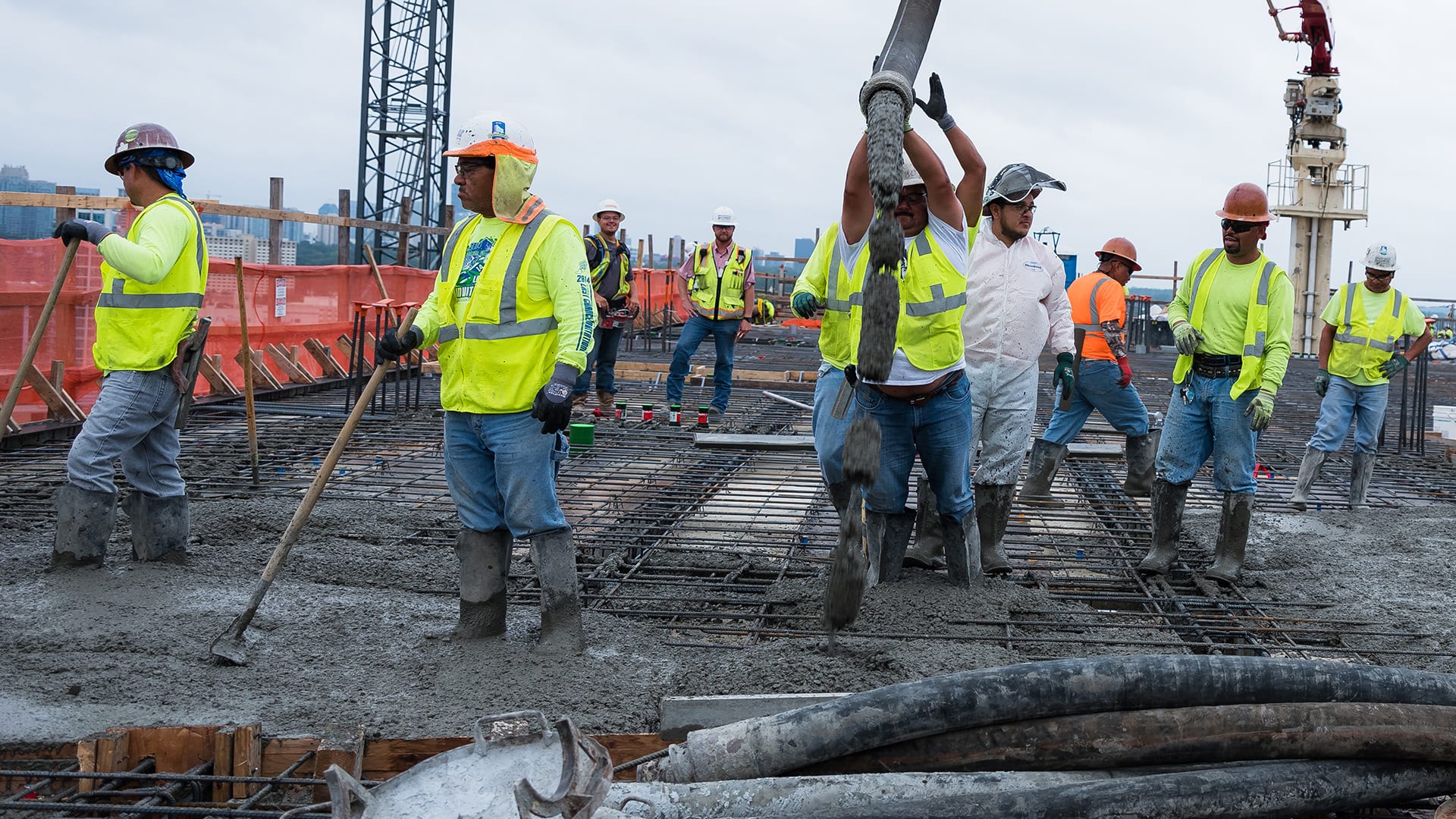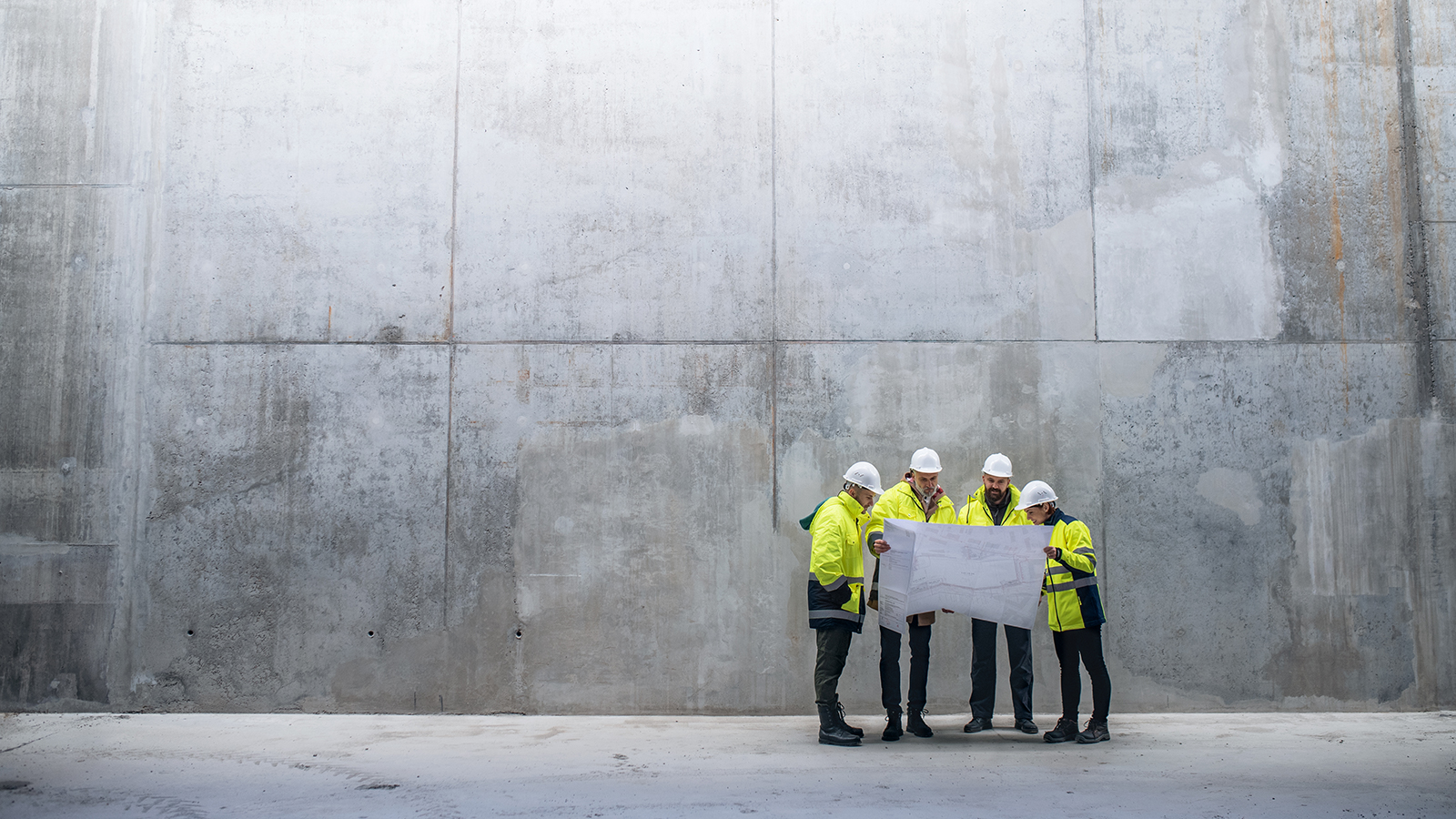The Vital Duty of Concrete Structure in Structural Stability and Long Life
When it involves constructing a residential property, the structure is a lot more crucial than you may assume. Concrete structures offer unrivaled strength and toughness, ensuring your structure can withstand various ecological difficulties. Without a strong base, you run the risk of prospective problems like changing or breaking, which can jeopardize safety and value. Comprehending the nuances of concrete structures might be the key to preserving your financial investment for years ahead. What should you consider following?
Comprehending the Significance of Concrete Foundations
Concrete foundations are essential to the overall security of any kind of structure, as they offer the important assistance required to withstand numerous loads and environmental conditions. When you consider constructing a home or an industrial area, the structure is the initial thing you must think about. It functions as a barrier versus wetness, safeguarding your building from water damages. A well-placed concrete structure also stops settling and changing, which can lead to splits in wall surfaces and floorings. You'll intend to guarantee that the foundation is appropriately developed and enhanced, as this affects the durability of your structure. In addition, a solid foundation can boost energy efficiency by reducing air leaks. Keep in mind, ignoring the significance of a concrete foundation can result in expensive repair services down the line. Investing in a quality structure upfront is important for the stability and durability of your framework.
Benefits of Concrete Foundations for Architectural Stability
While many factors add to a structure's architectural integrity, concrete structures offer unparalleled toughness and strength. You'll appreciate that concrete can withstand extreme weather condition problems, withstanding both moisture and temperature changes. This strength suggests your framework is less most likely to experience cracking or shifting with time, which can jeopardize its safety.Additionally, concrete's fundamental weight gives a solid base, protecting against activity during natural events like earthquakes or floods. When you choose a concrete structure, you're also selecting reduced upkeep; unlike timber, it won't rot or bring in insects, conserving you money and time in repairs.Moreover, concrete's fire resistance supplies included safety and security, ensuring your framework can endure high temperature levels without substantial damages. Generally, spending in a concrete structure suggests you're prioritizing the long-term stability and stability of your structure, making it a sensible option for any building task.
Common Kinds Of Concrete Foundations
When it comes to developing structures, comprehending the common sorts of concrete foundations can aid you make educated selections for your job. The most common types consist of slab-on-grade, crawl room, and full cellar foundations.A slab-on-grade structure is an easy, affordable choice, where a thick concrete piece is put directly on the ground. This type works well in cozy environments, as it reduces heat loss.Crawl area foundations raise the home a little above ground, allowing for ventilation and access to pipes and electrical systems. This style can help stop wetness issues.Full basement foundations provide extra living or storage area while giving superb structural support. They require even more excavation and are commonly utilized in cooler climates to protect against frost heave.
Factors to Think About When Designing a Concrete Foundation

Best Practices for Setting Up Concrete Foundations
When you're mounting a concrete structure, correct website prep work is necessary to ensure security (West Coast General Engineering industrial concrete). You'll likewise require to recognize support techniques to enhance toughness and longevity. Finally, don't overlook the healing procedure, as it plays an essential function in attaining a solid foundation
Website Prep Work Significance
It might seem uncomplicated, appropriate site preparation is vital for guaranteeing a strong and durable concrete structure. Beginning by removing the location of any type of particles, plant life, or natural product that could jeopardize the foundation's honesty. Next, assess the dirt type and compaction; you may need to dig deep into or add products to create a steady base. Level the ground to ensure even weight circulation and avoid resolving issues later. Mounting proper water drainage systems is likewise vital to stop water build-up, which can deteriorate the structure gradually. Lastly, mark out the foundation's measurements accurately to assist the putting process. By adhering to these steps, you'll set the stage for an effective concrete structure that stands the examination of time.
Reinforcement Methods Described
As soon as the site is correctly prepared, the following action in assuring a sturdy concrete foundation includes carrying out reliable support techniques. You should start by utilizing steel rebar, which supplies tensile stamina and helps avoid fracturing. Lay the rebar in a grid pattern, seeing to it it rises utilizing spacers to preserve correct insurance coverage. Additionally, think about making use of cord mesh for extra support, especially in locations based on hefty lots. Do not fail to remember to connect the rebar crossways safely with cable. For larger foundations, fiber reinforcement can enhance sturdiness, lowering the threat of shrinkage cracks. Always follow neighborhood building regulations and standards to make certain conformity. By using these reinforcement techniques, you'll greatly boost your structure's stamina and durability, laying a strong foundation for your structure.
Curing Process Basics
To assure your concrete structure remedies correctly, it is very important her latest blog to maintain adequate dampness and temperature level conditions instantly after pouring. Beginning by covering the surface area with a wet cloth or plastic bed linen to maintain moisture. This maintains the concrete moisturized, avoiding cracks and making certain stamina. You ought to also check the temperature; perfect healing problems are between 50 ° F and 90 ° F. If it's also hot, haze the surface area on a regular basis to avoid rapid dissipation. For cold climate, think about using protecting blankets to keep warmth. Go stampcrete international for a treating period of a minimum of seven days, as this is crucial for optimal toughness development. By adhering to these finest techniques, you'll improve your structure's toughness and longevity, making certain structural stability for years ahead.
Maintenance of Concrete Structures for Longevity
To keep your concrete structure strong and enduring, regular examinations are vital. You need to likewise ensure effective drain solutions are in location to avoid water damage. If you detect any fractures, resolving them quickly will conserve you from larger troubles down the line.

Regular Inspections and Analyses
While routine assessments and assessments could appear like a task, they're important for maintaining the honesty of your concrete foundation. By routinely looking for fractures, shifts, or indicators of wear, you can catch possible problems before they rise into pricey repair work. Look for any kind of water pooling around the structure or unusual settling, as these can signify underlying issues. It's additionally a good idea to monitor any kind of changes in your house's structure, like doors that stick or home windows that don't open efficiently. Maintaining a record of your inspections assists track changes gradually, permitting positive upkeep. Eventually, these analyses guarantee your structure continues to be steady, sustaining the longevity and security of your whole structure. Don't forget this vital facet of homeownership!
Effective Drain Solutions
Normal evaluations can expose problems like drainage issues that could compromise your concrete foundation's stability. To avoid water accumulation, ensure your rain gutters and downspouts straight water far from the foundation. Installing French drains can successfully reroute surface area and groundwater, decreasing pressure on your structure wall surfaces. In addition, rating the soil around your home helps ensure that water streams away, instead than merging near your foundation.Consider making use of sump pumps in locations prone to flooding, as they actively remove excess water. On a regular basis look for clogs in drainage systems and clear them quickly. You'll safeguard your structure's stability and durability by taking these aggressive actions. Remember, effective drainage services are vital for preserving a strong, long lasting concrete foundation.
Trigger Fracture Fixes
When you observe fractures in your concrete structure, addressing them quickly is vital for preserving its longevity. Small cracks can quickly evolve into bigger concerns, endangering the architectural stability of your home. Frequently examine your foundation for signs of damages, such as straight or vertical cracks. If you detect any type of, don't wait-- repair them immediately. You can make use of epoxy shots or concrete patching compounds, which walkway stamped concrete are effective for securing fractures. Always adhere to the maker's directions and consider getting in touch with a specialist for considerable damage. Bear in mind, timely repairs not just improve your foundation's longevity however also conserve you money in the future by stopping more considerable repair services down the line. Remain aggressive, and your structure will certainly continue to be solid and protected.
Addressing Usual Issues With Concrete Structures
Concrete foundations can deal with various problems over time, making it important to identify and resolve them promptly. One of one of the most common issues is cracking, which can happen as a result of temperature variations or settling soil. If you see cracks, it's necessary to assess their dimension and deepness; small fractures can usually be sealed, while larger ones might call for professional evaluation.Water invasion is an additional major worry. Excess moisture can result in mold and mildew development and structural degeneration. Warranty proper drain around your structure to minimize this risk. Furthermore, try to find signs of shifting or bowing walls, as this can show underlying issues with your foundation's stability.Regular assessments are basic to capture these problems early. If you find any type of worrying indicators, don't hesitate to seek advice from a structure specialist. By remaining aggressive, you can keep the integrity and longevity of your concrete foundation, ensuring your home stays secure and safe and secure.
Frequently Asked Inquiries
How Does Soil Type Affect Concrete Foundation Performance?
Dirt type significantly affects concrete foundation performance. If you have actually obtained large clay, for circumstances, it can trigger moving and breaking. Sandy soil might result in settling. Understanding your soil aids assure a steady foundation.
Can Concrete Foundations Be Repaired if Harmed?
Yes, you can fix damaged concrete foundations. Depending on the level of the damages, methods like epoxy injection or slab jacking can recover security. It's finest to consult a specialist for reliable options.
What Is the Common Lifespan of a Concrete Structure?
A concrete structure generally lasts 30 to 100 years, depending on factors like dirt conditions, environment, and upkeep. You'll wish to watch on it to ensure it remains in excellent form throughout its lifespan.
Exist Option Materials to Concrete for Foundations?
Yes, there are options to concrete for foundations, like steel, hardwood, and even recycled materials. Each choice has distinct advantages and disadvantages, so you should consider your task's particular needs when selecting the right product.
How Does Climate Influence Concrete Foundation Durability?
Environment greatly affects concrete structure sturdiness (West Coast General Engineering concrete foundation). Severe temperatures, wetness, and freeze-thaw cycles can deteriorate the product, resulting in fractures and architectural concerns. You ought to think about neighborhood climate conditions when preparing your structure to guarantee long-term performance